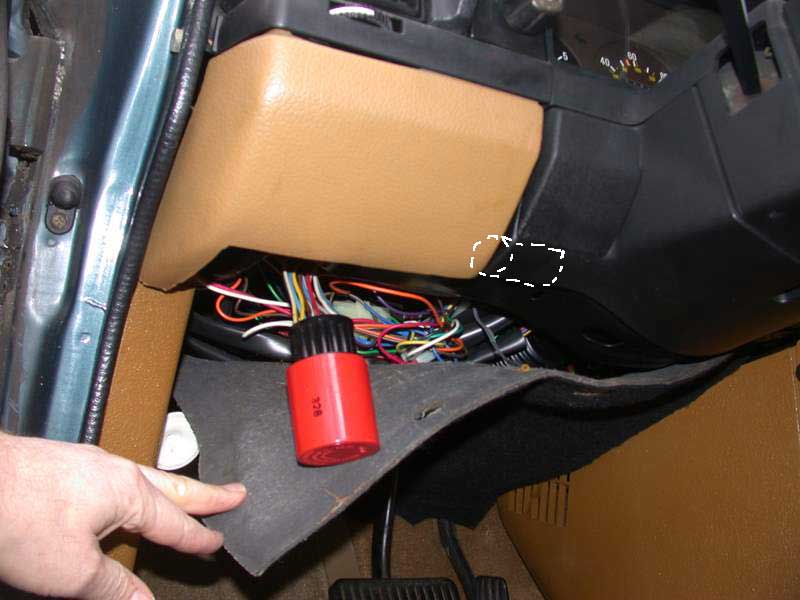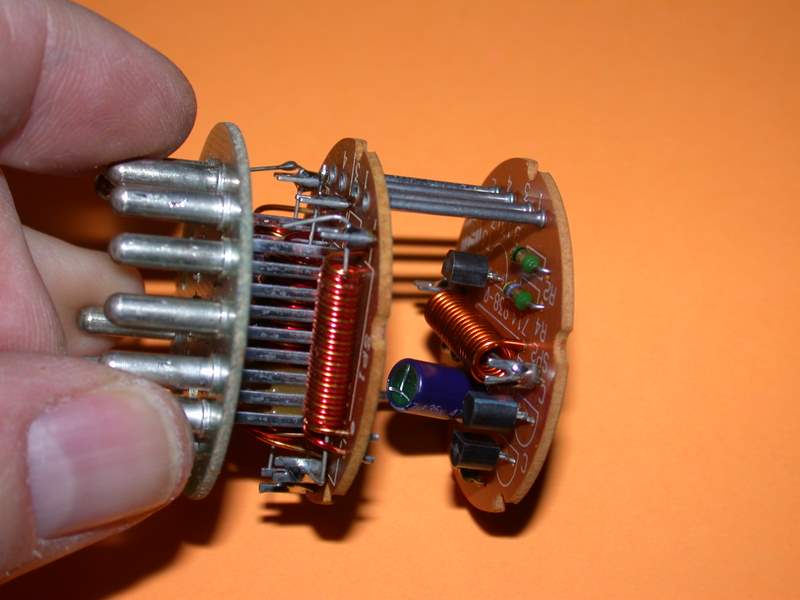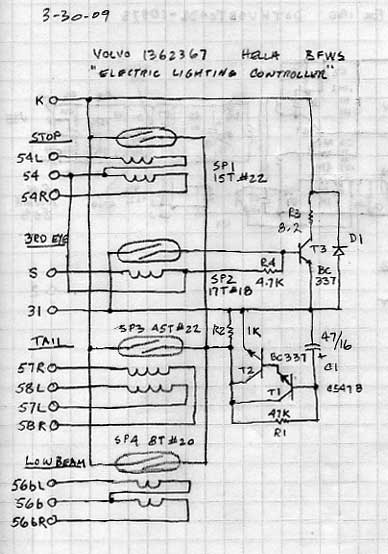|
That's interesting!
"The bulb sensor design compares the current of one brake bulb to the combined current of approximately 2/3rds of the other brake bulb plus 1/3rd of the 3rd brake bulb."
I wonder how it does that.
The 240's sensor, p/n 1362637 looks like this:

The way it works for the third brake light is a logic circuit: If it senses voltage applied by the brake pedal switch, but does not see current through the high-mounted bulb, it lights the bulb failure indicator on the instrument panel.

Or, if the two brake lamp filaments in the tail lamp clusters are pulling current unequally, the warning is given.

The windings around the reed switches which turn on the warning lamp are chosen to match the expected current drawn by the incandescent bulbs as much as 15 times more than some LED equivalents use. See the fine wire used in the running lamp (rear parking lamp) and the heavy wire for the brighter brake lamps and low beam headlamps.

Each has two windings in reversed direction, so that two equal currents cancel the magnetic field that closes the reed switch, except for the third brake light which has only one winding to sense the presence of bulb current.

The logic for the brake light warning can be tricky. Let's say you pull the connector off of both tail lamp assemblies, simulating both sides having failed filaments. No warning. Yet the third brake light works. Let's say your brake lamp fuse opened up. No warning.
However, if the lamps are changed to LEDs that do not draw enough current to operate the magnetic reed switches -- no warning. Same as both sides having failed incandescent bulbs. But some LED replacements include resistors for compatibility with CAN bus cars, and may draw enough current to work with this bulb failure warning sensor. Or maybe. On the hairy edge of unreliability.
So, however the sensor used in the '94 900 series cars works, if you want to have that warning system, it might be good to test it by removing one of the LEDs, because although it was a feature to warn of broken filaments, we with old cars have seen just as many bulb failure warnings that were caused by poor and corroded connections, to which LED replacements are just as prone.
--
Art Benstein near Baltimore
|